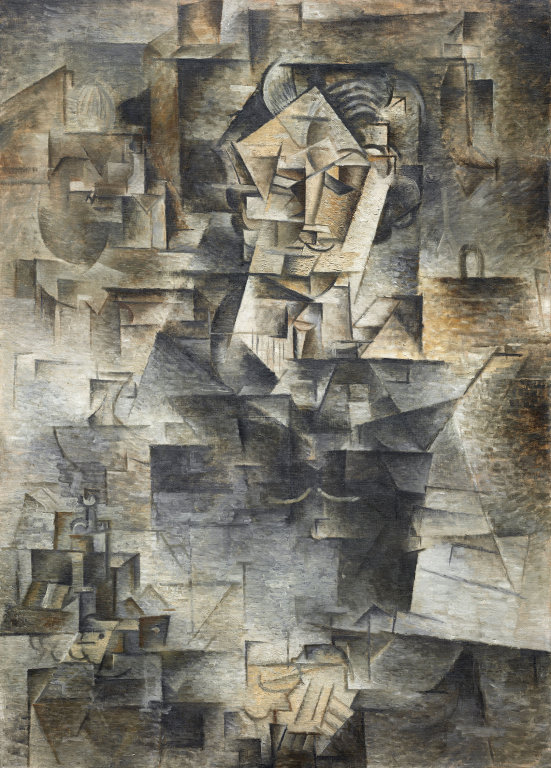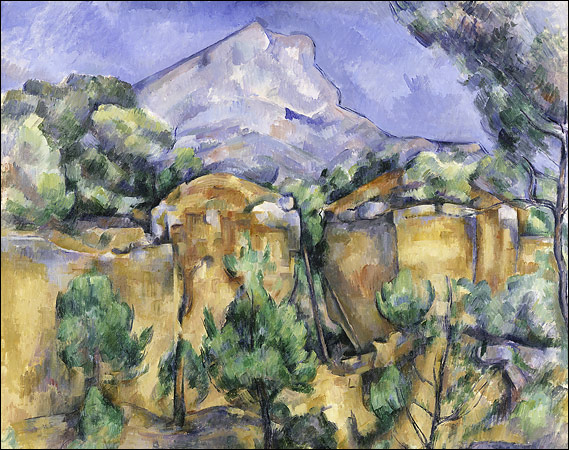 The painter Balthus at work
The painter Balthus at workWith apologies to WB+, I have borrowed the title of one of his
recent posts, because in part, Whitehall has been the impetus for this post. (Be sure to read
his follow-up post, too.)
The notions of Ora (Prayer) and Labora (Work) have been very much on my mind lately, not least because I have been laboring in many areas lately toward many, but overlapping, ends. On the one hand, there is the on-going struggle to finish my M.A. thesis. Then there are my classes, my research assistantship, some service work for the university, my catechism class, dabbling with my paints, and lastly, this blog. And at the same time, I have endeavored to implement a greater degree of discipline in my prayer life, to which end
The Garden of the Soul has been most helpful.
But they have also been on my mind because I have turned to painting icons, which being both paintings and devotional aids seem to be the epitome of
ora et labora. I recently hunted up a quote by one of my all-time favorite artists, and devote Catholic, Balthasar Klossowski, known as Balthus. In his
memoir, Balthus says,
I always begin a painting with a prayer, a ritual act that gives me a means to get across, to transcend myself. I firmly believe that painting is a way of prayer, a means of access to God.
Sometimes I've been reduced to tears, facing the challenges of a painting. Then I hear a godly voice speaking to me from within: "Hold on, resist!" It's a certain kind of grace, as in the libretto of Mozart's Magic Flute. These words, whenever I hear them, make me continue with my work. Follow the path until life is over.What Balthus points out to us is not merely that the activity of painting can be an act of prayer. He also points us back to the divide that exists between the artist's intentions and the realization of the same. The work is a struggle towards an unattainable perfection. His Holiness, John Paul II, noted this condition in his
1999 Letter to Artists:
All artists experience the unbridgeable gap which lies between the work of their hands, however, successful it may be, and the dazzling perfection of the beauty glimpsed in the ardour of the creative moment: what they manage to express in their painting, their sculpture, their creating is not more than a glimmer of the splendour which flared for a moment before the eyes of their spirit.The romantic concept of the artist as a tormented genius, which albeit needs nuancing and contextualizing, is not entirely off the mark. To make art—but I don't limit this strictly to art—is to enter into an uncertain half-way place between where one is and where one wants to get to, a place where the getting-to becomes more unlikely as one proceeds. It is the existential crisis
tout court.
The crisis is insurmountable for anyone who does not have access to prayer. Because while art is a deliberate immersion in one's own perspective of the world, that is, one's subjectivity, prayer is the opposite. Prayer demands that one look at the world and oneself through the eyes of God. Prayer is the perfect complement for the work, because the work has usually only the glimmerings of the goal in mind and is entirely concerned with the striving, but without knowing how to get there. Prayer, on the other hand, has the goal so firmly in mind, but without the least concern for how the goal will be accomplished. It is the act of faith that the goal
will be accomplished, and indeed has already been secured by divine intervention.
It must be this security which transforms the
labora into
ora, and vice versa. Because the work becomes a willingness to submit to the divine will and a way of communing with it; the work rests not only in the assurance of our being made complete in the image of Christ, but also a way of participating in that process as it unfolds.
I was going to write a short review of James Elkins' book
What Painting Is, which I just finished, but I have decided against doing this because the premise of the book can be summed up fairly neatly: Elkins' sees alchemy and its belief that base substances (the
prima materia, in alchemical-speak) can be transformed into the mythical, supernatural philosopher's stone as a metaphor for painting. In painting, it is colored muds that are miraculously transformed by the artist's labor into a transcendent object; through the process of painting they are made meaningful.
But perhaps this is taking the wrong end of the stick, or brush. Painting, and art in general, ought to be regarded as a metaphor for the very real work of transformation which the Holy Spirit is working out in the lives of every Christian. Like painting, it is slow, and works with imperfect, intractable elements made of mud. But unlike painting the end is certain.








